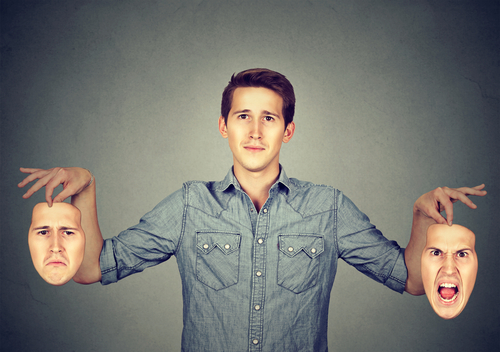
Borderline personality disorder is one of ten personality disorders listed in the Diagnostic and Statistical Manual of Mental Disorders, Fifth Edition (DSM-5). Each of the ten personality disorders is categorized into one of three clusters (cluster A, cluster B and cluster C). The personality disorders that make up each clusters share similar symptoms and have overlapping characteristics. According to the American Academy of Family Physicians (AAFP) cluster A is characterized as odd or eccentric personalities; cluster B is characterized as dramatic, emotional, or erratic personalities; and cluster C is characterized as anxious or fearful personalities. Borderline personality disorder is classified as a cluster C personality disorder. The National Institute of Mental Health explains, “Borderline personality disorder is an illness marked by an ongoing pattern of varying moods, self-image, and behavior.” The cause of borderline personality disorder remains unknown. There are, however, certain risk factors (e.g. brain structure and function, genetics, environmental, cultural and social influences, etc.) that have been noted as potentially contributing to its development. Due to the illusive nature of its symptoms paired with the fact that many symptoms overlap with other mental health ailments, BPD is notoriously known as one of the most difficult mental health illnesses to diagnose.
Signs and Symptoms
The symptoms of borderline personality disorder typically result in overarching interpersonal relationship complications and impulsive actions. The Mayo Clinic provides examples of signs and symptoms that are commonly exhibited in individuals with borderline personality disorder, some of which include, but are not limited to the following:
- Engaging in risky and/ or impulsive behaviors (i.e. reckless driving, excessive gambling, binge eating, substance abuse, unsafe sex…etc.)
- Intense fear of abandonment
- Suicidal ideations
- Self-injury
- Severe mood swings (i.e. elation, irritability, shame, anxiety…etc.)
- Pattern of unstable relationships
- Irrational displays of anger
- Distorted self image
- Feelings of emptiness
- Stress related paranoia
Some individuals may experience numerous symptoms of BPD, while others may only experience a few symptoms. Research has indicated that individuals with borderline personality disorder may experience intense episodes of depression, anxiety and/ or anger that could last from a few hours to several days long. Every individual is different and has the propensity to exhibit a unique combination of signs and symptoms related to borderline personality disorder.
Treatment
Although borderline personality disorder is considered a chronic mental health condition, there are a variety of treatment options available for individuals diagnosed with BPD, which can help individuals, learn to manage their symptoms. The most common method of treatment for borderline personality disorder is dialectical behavior therapy (DBT). Marsha M. Linehan developed DBT in the late 1980s, specifically to better treat chronically suicidal individuals with borderline personality disorder. Dialectical behavior therapy is based on the cognitive behavioral therapy (CBT) approach, and places greater emphasis on the psychosocial aspect of therapy. With proper treatment, an individual diagnosed with borderline personality disorder can learn to effectively navigate his or her symptoms of BPD and go on to lead a happy and fulfilling life.
Disclaimer:
The information above is provided for the use of informational purposes only. The above content is not to be substituted for professional advice, diagnosis, or treatment, as in no way is it intended as an attempt to practice medicine, give specific medical advice, including, without limitation, advice concerning the topic of mental health. As such, please do not use any material provided above as a means to disregard professional advice or delay seeking treatment.









